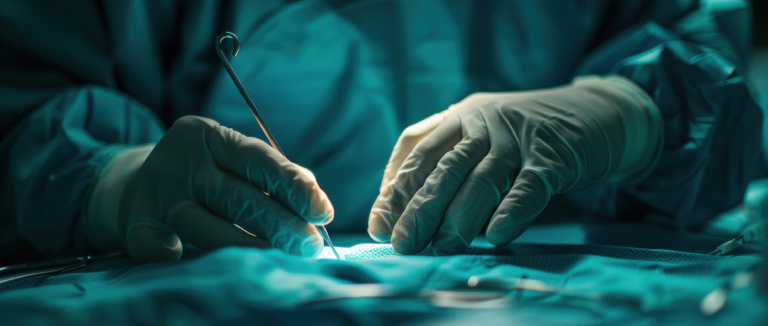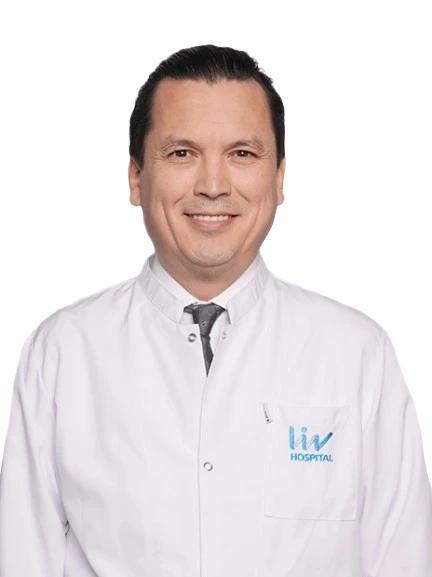What Is a Brain Pacemaker?
A Brain Pacemaker is a medical device specifically designed to reduce symptoms stemming from dysfunctional activity in the brain’s motor control centers. The device consists of three primary components:
- Implanted electrodes (leads) are positioned with millimetric precision within targeted brain nuclei.
- An implanted pulse generator (IPG), often referred to as the “battery” or “pacemaker,” is typically placed under the skin in the chest below the collarbone.
- Extension leads that connect the brain electrodes to the chest-implanted battery.
The core therapy is called Deep Brain Stimulation (DBS). During DBS, the electrodes deliver continuous, adjustable electrical stimulation to brain targets that are known to be hyperactive or dysregulated in certain diseases. By modulating these circuits, DBS can reduce excessive or abnormal signaling and restore a more physiologic balance within the involved pathways. This effect can translate into better tremor control, reduced rigidity, smoother movements, and improved functional capacity.
Beyond movement disorders, brain pacemakers are also utilized for some psychiatric conditions in carefully selected cases, reflecting the broader principle that targeted neuromodulation can influence complex brain networks.

Which Conditions Can Be Treated with a Brain Pacemaker?
A brain pacemaker is effective for treating the following conditions:
- Parkinson's disease (especially cases resistant to medication)
- Essential tremor (uncontrollable shaking)
- Dystonia and other movement disorders
- Certain psychiatric conditions, such as major depression and obsessive-compulsive disorder (OCD)
Impact on Parkinson’s Symptoms
A Brain Pacemaker for Parkinson’s disease Deep Brain Stimulation serves as a surgical treatment option for Parkinson’s and other movement disorders. In suitable candidates, DBS can significantly improve:
- Tremors that persist despite medication.
- Slowed movements (bradykinesia) that reduce daily function.
- Medication-induced involuntary movements (dyskinesias).
- Wearing-off phenomena and motor fluctuations that cause unpredictable “on/off” periods.
By fine-tuning stimulation parameters and, when appropriate, adjusting medications postoperatively, many patients achieve smoother motor control throughout the day. DBS does not replace all medications for most patients, but it frequently allows for lower doses and improved quality of life. Importantly, DBS targets motor symptoms and is not expected to reverse non-motor features such as cognitive decline or autonomic symptoms.
The Surgery Process and Decision-Making
Before surgery, patients are closely monitored in a neurology clinic. Those who do not respond to medication are assessed by a multidisciplinary team of neurologists, neurosurgeons, and psychiatrists. Patients considered suitable candidates are then prepared for Brain Pacemaker surgery..
Who Is Not Eligible for Brain Pacemaker Surgery?
The following conditions may render patients ineligible for this procedure:
- Parkinson’s disease diagnosed within the first five years
- Moderate to severe dementia
- Serious internal health issues
- Patients over the age of 70

How Is Brain Pacemaker Surgery Performed?
Brain Pacemaker implantation surgery, also known as deep brain stimulation (DBS), involves placing electrodes in targeted areas of the brain to deliver electrical impulses. This stimulation helps regulate abnormal brain activity and is most commonly used to treat neurological disorders such as Parkinson’s disease, essential tremor, and dystonia.
The surgery involves the following steps:
- Imaging (MRI and CT): Identify target areas in the brain.
- Local Anesthesia: A special frame is applied to the patient’s head.
- Electrode Placement: Electrodes are implanted in the designated brain regions.
- Battery Connection: Electrodes are attached to a battery implanted under the skin in the chest.
After surgery, continuous electrical stimulation is applied to the targeted brain areas, helping to reduce or even eliminate symptoms such as tremors, freezing, and decreased mobility.
Post-Surgery Process
- Patients are typically discharged the day after surgery.
- The pacemaker settings are fine-tuned within the first week after surgery.
- Regular follow-up appointments are schedule initially every 10 days, then every 4 to 6 weeks, and subsequently transitioning to monthly or quarterly intervals.

The Surgery Process and Decision-Making
Before surgery, patients are closely monitored in a neurology clinic to document symptom patterns, medication response, and daily functional impact. Those who do not respond adequately to medication—or who experience significant side effects and motor fluctuations are assessed by a multidisciplinary team that includes:
- Neurologists specializing in movement disorders.
- Neurosurgeons experienced in stereotactic and functional neurosurgery.
- Psychiatrists and neuropsychologists, when relevant, to evaluate mood, cognition, and behavioral aspects.
This integrated evaluation helps determine candidacy and ensures that expectations align with the likely benefits and limitations of DBS. Patients considered suitable candidates are prepared for Brain Pacemaker surgery with thorough imaging, symptom mapping, and individualized planning of the target brain region(s).
How Does a Brain Pacemaker Affect Daily Life?
Following surgery and with their doctor's approval, patients can resume social and professional activities. They are able to meet daily needs independently and maintain a healthy, active lifestyle.
The cost of a brain pacemaker (Deep Brain Stimulation or DBS) for Parkinson's disease can be quite high, reflecting the complexity of the procedure, the technology involved, and ongoing management and care. In Turkey, deep brain stimulation (DBS) is a prominent treatment option for various neurological disorders. Liv Hospital serves its patients with a high success rate with its specialist doctors and experienced team in deep brain stimulation surgery.
* Liv Hospital Editorial Board has contributed to the publication of this content .
* Contents of this page is for informational purposes only. Please consult your doctor for diagnosis and treatment. The content of this page does not include information on medicinal health care at Liv Hospital .
For more information about our academic and training initiatives, visit Liv Hospital Academy
Frequently Asked Questions
What is a brain pacemaker?
It is a device used in Deep Brain Stimulation to send controlled electrical signals to brain areas that regulate movement.
Which conditions can it treat?
It is used for Parkinson’s disease, essential tremor, dystonia, and select psychiatric disorders such as OCD or severe depression.
How does it help Parkinson’s symptoms?
It improves tremors, stiffness, slow movement, and medication related fluctuations by stabilizing abnormal brain activity.
Who is not eligible for the surgery?
People with early Parkinson’s, significant dementia, major health problems, or those over age 70 may not qualify.
How is the surgery performed?
Electrodes are implanted in targeted brain areas and connected to a battery placed under the chest skin.
Is the surgery painful?
The brain part is usually done under local anesthesia, while the battery placement is done under general anesthesia.
What is recovery like?
Patients usually go home the next day, and device settings are adjusted over several weeks.
Does the device replace medication?
No, but it often reduces medication needs and improves daily symptom control.
How does it affect daily life?
Most patients return to normal activities, gaining improved mobility and independence.
Why choose Türkiye for treatment?
Türkiye offers advanced DBS technology, skilled neurosurgeons, and cost effective care at internationally recognized hospitals like Liv Hospital.


